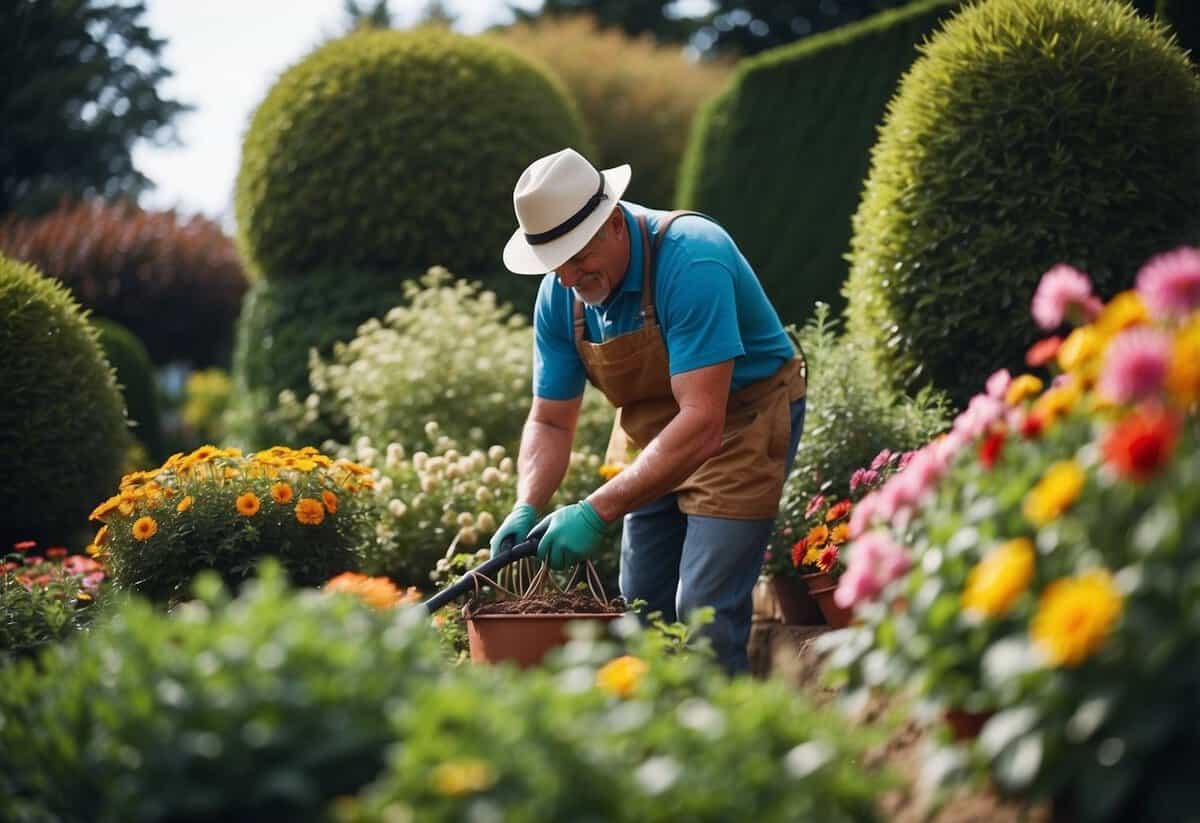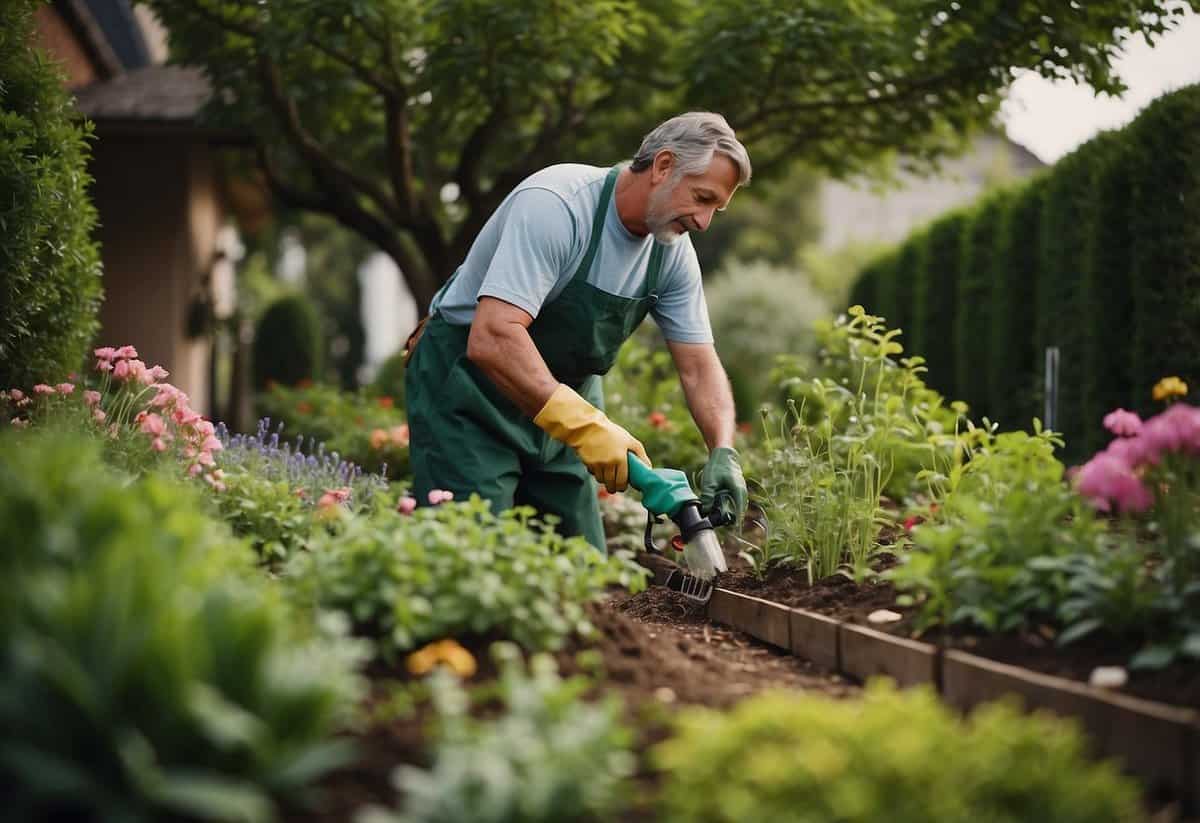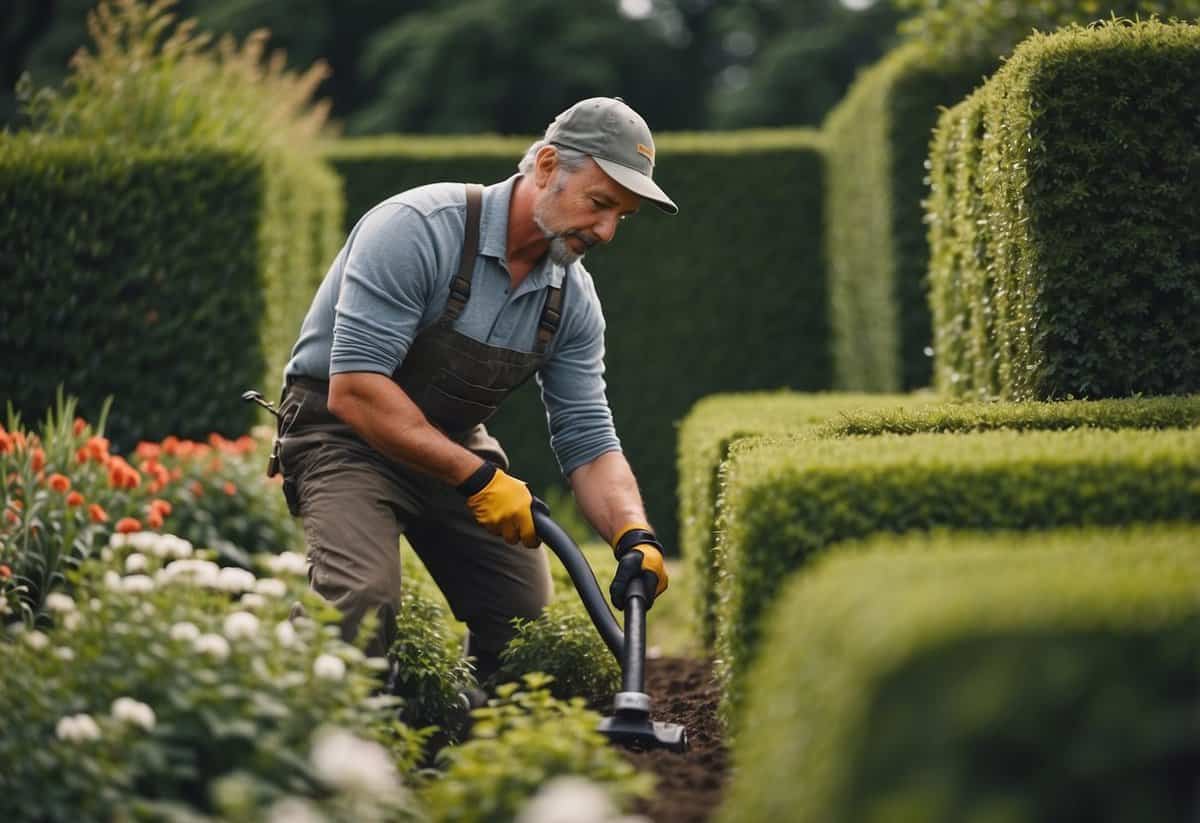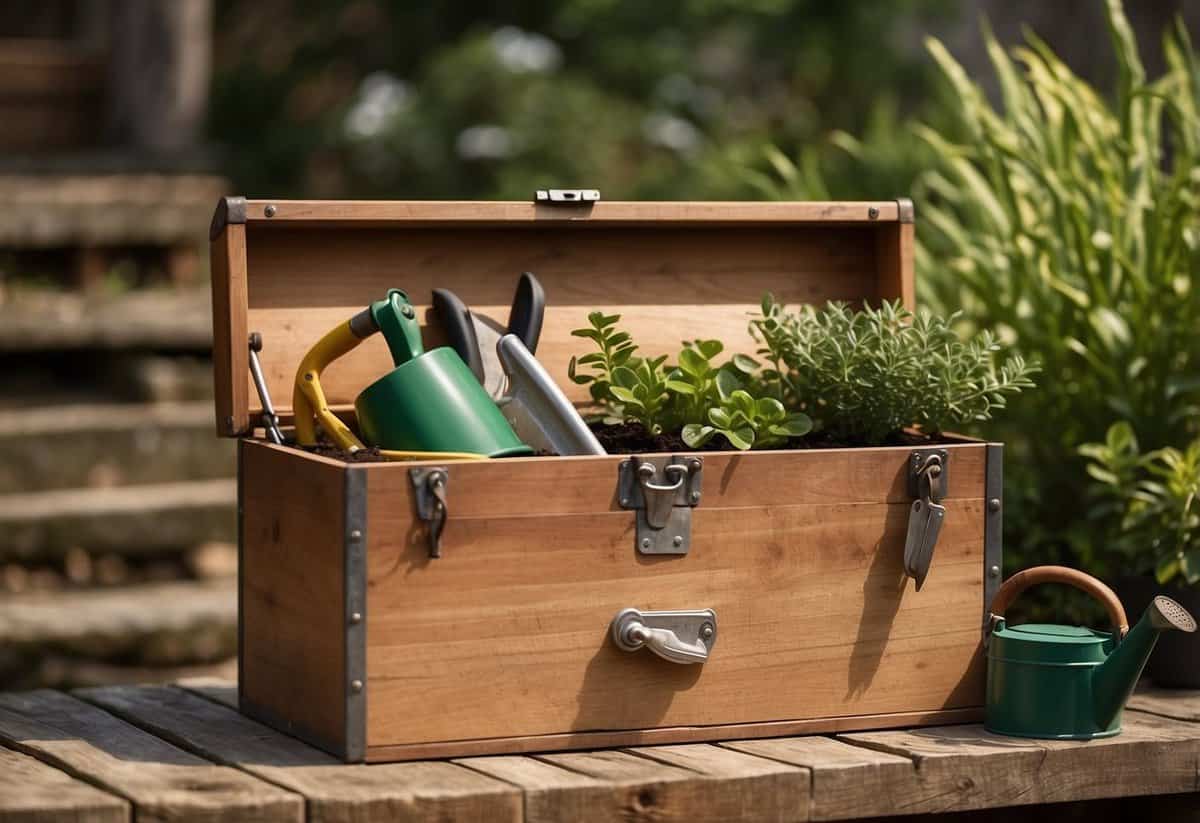What Can a Gardener Do? Tips for Transforming Your Garden
A gardener plays a vital role in creating and maintaining beautiful outdoor spaces. Your gardener can cultivate and manage gardens, ensuring plants thrive and look their best. They handle a variety of responsibilities including planting, pruning, weeding, and watering. These tasks help keep gardens vibrant and healthy throughout the year.

Not only do gardeners take care of general maintenance, but they also bring a unique blend of practical skills and creative flair to their work. They know how to use tools like spades, shovels, garden forks, and pruning shears to shape and nurture your garden. By doing so, they transform ordinary spaces into delightful green havens.
Moreover, a gardener’s expertise extends to different types of gardens, from private backyards to public parks and botanical gardens. Whether you need help with basic upkeep or a complete garden makeover, a skilled gardener can make a significant difference. For more detailed insights, check out the duties and responsibilities listed on Indeed and Smart Choice List.
Understanding the Gardener’s Role

A gardener’s job can be quite diverse, involving many tasks from designing garden layouts to maintaining plant health. To become a successful gardener, you need certain skills and often some education or certification.
Skills and Responsibilities
Gardeners perform a variety of tasks to keep gardens beautiful and healthy. They plant and care for trees, flowers, and shrubs. Using tools like spades, shovels, and pruning shears is a daily part of the job. Mowing lawns, trimming plants, and applying fertilizers and pesticides to plants are also common tasks.
Gardeners are often responsible for designing garden layouts. This includes deciding where to plant and how to arrange different species to create a pleasing aesthetic. Your creativity and knowledge of plant care will help in designing beautiful and sustainable gardens.
Gardeners also manage pest control. Monitoring plant health and applying organic or chemical pest controls are part of the job. You may also need to install irrigation systems to ensure plants get the right amount of water.
Education and Certification Paths
To become a gardener, you don’t always need formal education, but it does help. Courses in horticulture or botany can provide useful knowledge about plant care and garden management. Community colleges and vocational schools often offer these courses.
Certifications can boost your career. One well-known certification is the Master Gardener program. Offered in many areas, this program provides in-depth training in gardening techniques, plant science, and even landscape design. Completing this program can make you more attractive to employers.
For some positions, employers may look for additional credentials or experience. Volunteering in community gardens or internships at botanical gardens can provide hands-on experience that is valuable in this career. Whether you aim to work in private gardens, public parks, or botanical gardens, having relevant education and certifications can give you an edge.
Garden Planning and Design

Planning your garden involves designing the landscape layout and selecting plants that suit your garden type. This section will guide you through creating both a visually pleasing and functional garden.
Landscape Layout and Aesthetic
A well-designed landscape layout creates harmony and balance. Start by outlining the shapes and curves using a garden hose, which helps you visualize the design before digging. Beds that are 5 feet wide can accommodate three layers of plants, making your garden appear lush and full. Adding paths, benches, or fences not only enhances the visual appeal but also provides practical elements for enjoyment.
When designing, think about how different elements like trees, shrubs, and flowers will fit together. Group plants with similar needs to make maintenance easier. Consider “borrowed views” by positioning plants to frame attractive features in the surrounding landscape, enhancing the overall aesthetic. A workshop at a garden center can also be useful, as they often provide tips and discounts on plants you purchase.
Plant Selection and Garden Types
Choosing the right plants for your garden is crucial for its success. Select plants that thrive in your local climate and soil conditions. Native plants are often a good choice as they are adapted to the local environment and require less maintenance. Think about incorporating a mix of perennials and annuals to ensure color and interest throughout the year.
When planning, consider different garden types like vegetable gardens, flower gardens, or mixed gardens. Each type has specific requirements. For instance, a vegetable garden needs plenty of sunlight and fertile soil, while a flower garden may require specific flower types to attract pollinators. Use online tools like Gardena’s My Garden to visually plan your garden layout and select appropriate plants and garden features. This tool allows you to add plants and architectural elements easily, helping you achieve an organized and aesthetically pleasing garden.
Garden Care and Maintenance

Keeping your garden healthy involves regular watering, proper soil management, strategic pruning, and effective pest control. Each of these tasks ensures vibrant plant growth and prevents issues before they escalate.
Watering and Irrigation Techniques
Watering is crucial for plant health. Different plants have different water needs. Most plants benefit from deep, infrequent watering, which encourages roots to grow deep into the soil. Using a drip irrigation system can help provide a consistent water supply without oversaturating the ground.
You should water early in the morning to reduce evaporation and allow foliage to dry quickly, preventing diseases. Mulching can also help retain soil moisture and keep the roots cool during hot weather.
Soil Management and Fertilization
Healthy soil is the foundation of any successful garden. Regularly test your soil to understand its pH and nutrient levels. Based on the test results, you can amend the soil with organic matter like compost to improve its structure and fertility.
Fertilizing should be done according to the needs of your plants. For instance, while flowering plants might need more phosphorus, leafy greens benefit from nitrogen-rich fertilizers. Using slow-release fertilizers can provide a steady supply of nutrients throughout the growing season.
Pruning and Growth Control
Pruning helps control plant growth and encourages healthier and more productive plants. Remove dead or diseased branches to prevent the spread of diseases and improve air circulation. For instance, tomato plants generally need the removal of suckers to focus energy on the main stems and fruits.
Different plants have different pruning needs. Understand the specific requirements of each plant in your garden. Timing is also vital; pruning at the wrong time can harm the plant or reduce blooming.
Pest and Disease Management
Pests and diseases can quickly turn a thriving garden into a disaster. Regular inspections can help you catch problems early. For pests, consider using natural predators like ladybugs or applying organic pesticides that won’t harm your plants or beneficial insects.
For disease management, it’s essential to rotate crops and avoid planting the same species in the same spot each year. This technique helps reduce the chances of soil-borne diseases. Also, make sure to remove plant debris from the garden, as it can harbor pathogens.
Using resistant plant varieties can also be an effective way to minimize both pests and diseases in your garden. Always keep an eye on your plants for signs of distress and take prompt action to maintain their health.
The Gardener’s Toolbox

In gardening, having the right tools and embracing innovative technology can make your tasks easier and more efficient. From essential hand tools to modern irrigation systems, a well-equipped toolbox is key for any gardener.
Essential Gardening Tools and Equipment
To get started, you’ll need several basic tools. A sturdy shovel helps with digging and planting, while a trowel is perfect for smaller tasks. Pruners are essential for trimming and shaping plants, and gloves protect your hands from thorns and rough materials.
For maintaining your garden, a hose or watering can keeps your plants hydrated. A rake helps in clearing leaves and debris, and a wheelbarrow makes transporting soil and plants easier.
Consider investing in a garden tool storage box to keep your tools organized and accessible. Options like the Galvanized Garden Tool Storage Box are durable and weather-resistant, ensuring your tools stay in top shape.
Innovations in Gardening Technology
Modern technologies can greatly improve your gardening experience. Irrigation systems, such as drip irrigation, provide water directly to plant roots, reducing waste and ensuring efficient watering. Smart irrigation controllers can even adjust watering schedules based on weather conditions.
Using the NC State Extension Gardener Plant Toolbox, you can find plants suited for a changing climate and create a resilient landscape. This tool is based on extensive research and offers features to help you select the best plants for your garden.
Additionally, gardening apps can assist with plant identification, pest control, and schedule reminders for watering and fertilizing. Embracing these technologies can save you time and ensure your garden thrives.
Professional Opportunities and Growth

Becoming a professional gardener offers various career paths and ongoing learning opportunities. You’ll find roles with different types of employers and plenty of ways to enhance your skills and knowledge.
Employment and Advancement
As a professional gardener, you can work in many settings. These include private residences, public parks, botanical gardens, and greenhouses. Your average salary can be about $31,000 per year or $15.11 per hour in the United States.
To advance in your career, build a strong resume showcasing your experience and skills. You might start as an entry-level gardener and eventually manage your own team. Look for roles that involve more responsibility, such as a senior gardener or horticultural manager.
Staying physically fit is also important because gardening involves a lot of physical labor. Regular exercise helps you handle this aspect of the job more easily.
Continuing Education and Community
Continuing your education can help you stay ahead in your gardening career. Many universities offer horticulture programs that teach valuable skills. You can also find many online courses to expand your knowledge in areas like sustainable gardening and pest management.
Participating in community gardening organizations can provide networking opportunities and practical experience. Joining these groups lets you learn from others, share your expertise, and stay updated on the latest gardening trends.
Investing in ongoing education and becoming part of the gardening community can open up new career opportunities and help you grow as a professional gardener.







